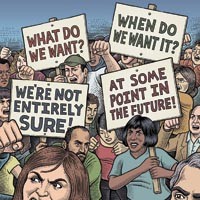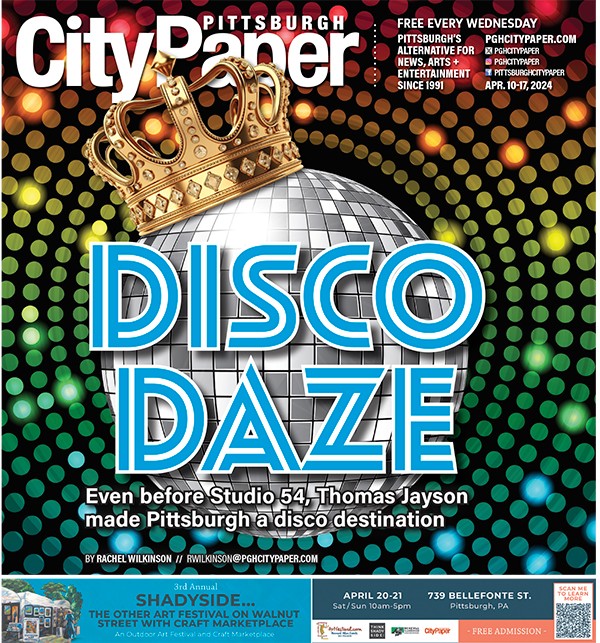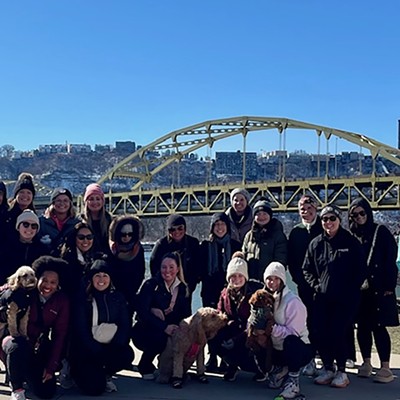For nearly a year, a messy dispute among local union activists has largely unfolded behind closed doors. But as a recent contentious press conference has made clear, an argument service-sector unions are having with each other is making it hard to fight for their workers.
As City Paper first reported Feb. 17, roughly 400 Mellon Arena workers -- representing concession stand and other employees -- are being told by their employer, Aramark, that they have to reapply for their jobs later this year. That's when the Pittsburgh Penguins leave the building and move across the street to the new Consol Energy Center.
The decision worried employees, and a Feb. 18 press conference was organized by Workers United, an affiliate of the Service Employees International Union (SEIU). But as reporters looked on, it quickly became apparent that the workers had other problems.
Since last year, Workers United has been in a pitched battle with UNITE HERE, which has traditionally represented the arena workers. Last March, local workers voted on whether to leave UNITE HERE Local 57 and join Workers United. The legitimacy of that election has been disputed ever since ... and both unions are now claiming to represent employees at dozens of work sites in the area.
The matter has been under review by the National Labor Relations Board for the past half year. But the dispute bubbled into public view during the Feb. 18 event, staged on Centre Avenue near the construction site of the new hockey arena.
Workers United representative Sam Williamson began the press conference by criticizing Aramark's tactics in front of a small group of reporters and a dozen other labor activists, several of whom were wearing the purple colors of the SEIU. But shortly after he began speaking, a dozen other workers -- these wearing the red, white and black of UNITE HERE -- joined the rally and began disrupting it.
"SEIU is raiding our members," said a UNITE HERE representative, Jen Blatz, standing just a few feet away from Williamson.
"That is not true!" shouted a member of Workers United.
For the next 10 minutes, activists squabbled with each other, with Aramark's tactics all but forgotten. Reporters, meanwhile, appeared confused by each union's claims, asking repeatedly for members of both groups to clarify who represented the workers.
"The press conference that was called is not this one!" Williamson yelled at one point. "It shouldn't be about two unions fighting each other."
The roots of the labor dispute go back six years.
In 2004, UNITE -- the Union of Needle Trades, Industrial and Textile Employees -- joined forces with HERE, the Hotel Employees and Restaurant Employees International Union. The hope was that the merged entity would create a strong 450,000-member union, one that capitalized on UNITE's financial resources and HERE's organizing potential.
The new union adopted UNITE's internal structure of joint boards -- regional umbrella groups scattered across the country. Accordingly, Local 57, which represents roughly 1,500 workers in the area, joined the Pennsylvania Joint Board. Over time, says Mark Wirick, of the National Labor Relations Board, the joint boards began taking on responsibilities previously held by the locals.
But the merger never really took hold, due in part to "deep personal animosities" among national leaders, says local labor historian Charles McCollester. Last February, Pennsylvania was one of 15 joint boards that voted to leave UNITE HERE.
Local 57's own leaders, however, opposed the split, voting in February to stay with UNITE HERE. And the difference of opinion has raised the question of who has final say.
"Had the joint boards become the de facto representative, in which the bargaining units would go with them?" asks Wirick, the NLRB assistant regional director for Pittsburgh. "Locally, we have an unusual situation. Arguably, Local 57 did not disaffiliate."
Matters got more confused last March, when the rank-and-file members of Local 57 took their own vote on the question. By the Pennsylvania Joint Board's tally, workers voted 784 to 105 in favor of splitting with UNITE HERE. But those results were called into question, too.
Williamson, a director of the Pennsylvania Joint Board, says the vote was "open and transparent." Local 57 workers knew weeks in advance that a vote was pending, he says, and UNITE HERE officials were present during the voting.
"It was fair and democratic," says G. Ryin Gaines, an arena suite attendant and Workers United supporter.
Anita Boehm-Renner remembers the process differently. "The vote was so much in shambles," says the 27-year veteran concession worker. The ballot box was made out of cardboard, she contends, and poll workers had no membership list, and couldn't verify that voters were union members. She also contends the ballot was poorly worded.
A copy of the ballot, provided to CP by the SEIU, reads as follows: "Local 57 resolves to remain affiliated with the PA Joint Board; disaffiliate from UNITE HERE; authorize the affiliation of the Local with a new organization of former UNITE HERE affiliates; and support an affiliation with SEIU." A "yes" vote was to part ways with UNITE HERE.
"We did not raid UNITE HERE," Williamson says. "It's unfortunate that they're trying to overturn the democratic process."
Workers United "is trying to create this illusion that they represent the workers," Blatz counters. "The poison of what SEIU is doing is hurting workers' morale [and] bargaining. It's hurting everything."
The NLRB has given no time frame for resolving the dispute.
"It's a mess," says McCollester, the labor historian. "It's probably true that both sides could make a case" to represent the workers. "How all this will play out, I don't know. [But] this warfare could be devastating."
So far, in fact, one early winner in the spat might be Aramark, whose contract with employees -- no matter who represents them -- expires at the end of March. During her previous interview with CP, Aramark spokesperson Kristine Grow said that compelling workers to reapply for their jobs was standard procedure when Aramark moves to a new venue. At the time, she made no mention of the union dispute.
After the Feb. 18 demonstration, however, she said "what you saw at the press conference is very central to what is happening at Mellon Arena. Because of [the dispute] we've been unable to continue negotiations" with any union.
But the dispute may yet cause headaches for employers as well. Since the split, Wirick says, UNITE HERE and Workers United have collectively filed 39 charges against area employers. Each union complains that employers have failed to recognize it as the workers' representative. "Virtually every employer who had a relationship with Local 57 is involved with this," Wirick says. That includes the employers of union members who work at the Omni William Penn hotel and the Sheraton Station Square hotel.
At the arena, for example, UNITE HERE filed a complaint in August alleging that, while it was "the recognized collective bargaining representative" for workers, Aramark has "failed and refused to bargain" with it. Less than two months later, Workers United filed a similar complaint, alleging that Aramark "has failed to remit withheld dues since on or about April 24, 2009, has denied access, and failed to process grievances as required by the collective bargaining agreement."
In fact, about the only thing the two sides can agree on is that the disagreement is hurting workers.
"It's a major problem," Boehm-Renner says.
Gaines agrees the problem is "frustrating." Once the NLRB decides, he says, "My hope is that whoever comes out on the short end of the stick will back off.
"Since the split," he adds, "the level of union representation has been next to none, or none at all."














